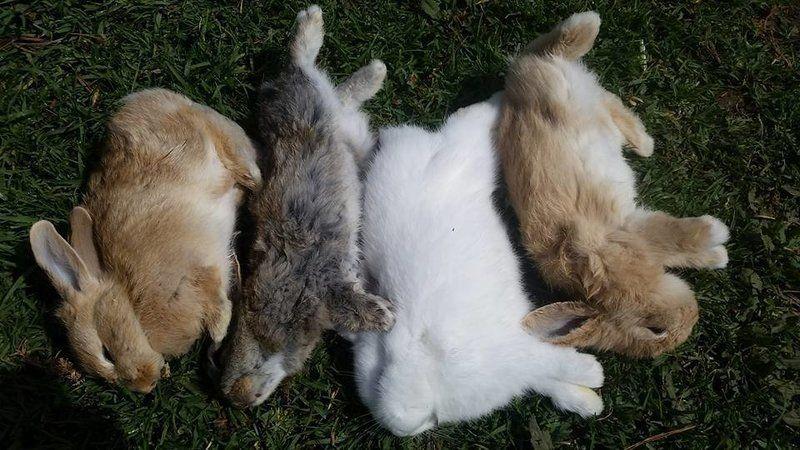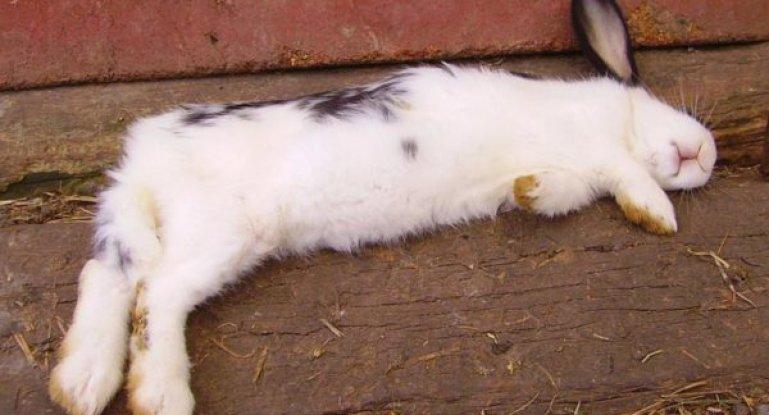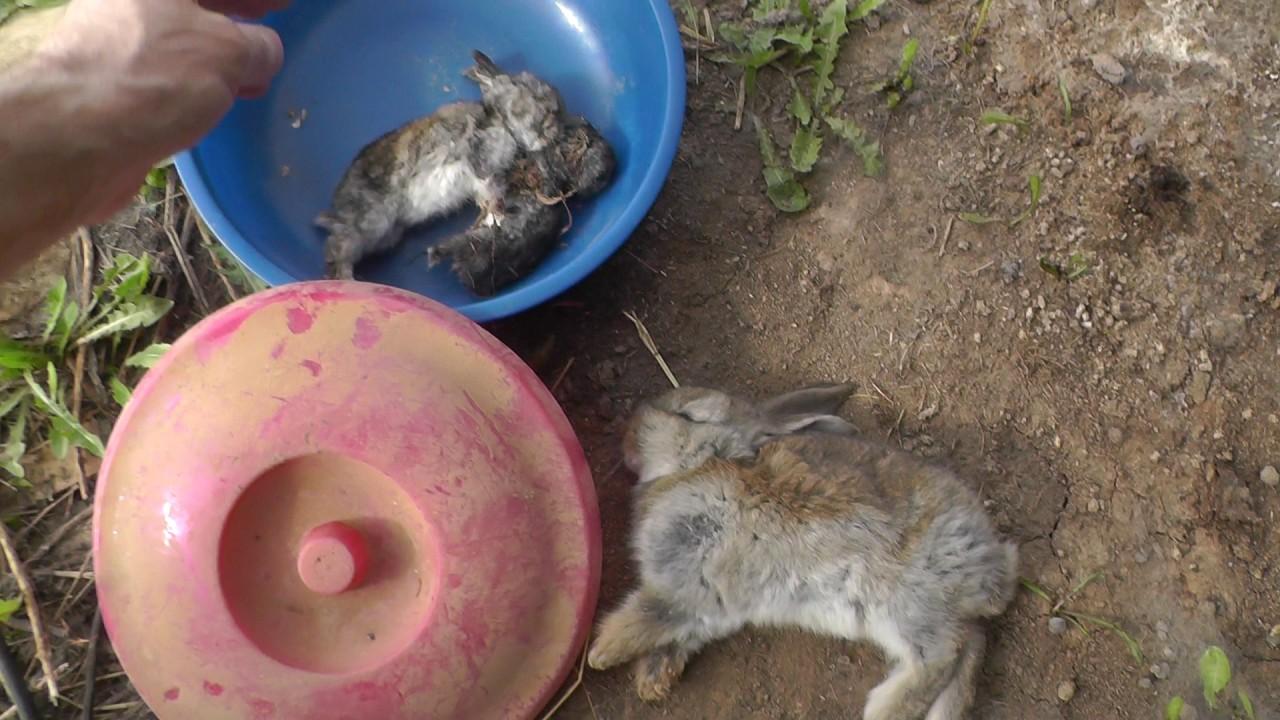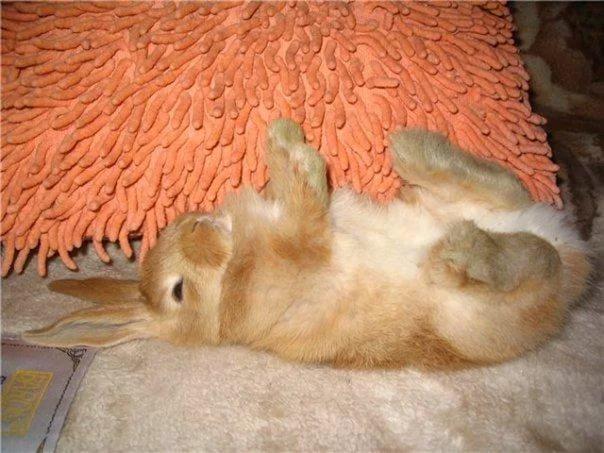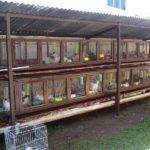Raising rabbits is a complex and responsible process that requires compliance with a number of conditions. Sometimes animals encounter serious pathologies that can lead to their death. Provoking factors are infectious and non-infectious diseases. Therefore, many farmers are interested in the question: why exactly do rabbits die?
Main causes of death
When breeding rabbits, farmers may face mass mortality or the death of one animal.There can be many reasons for such problems. The main factors include lack of care, use of low-quality feed, unsanitary conditions, and water pollution. Violation of the conditions of keeping animals increases the likelihood of infection by infectious and non-infectious pathologies.
To avoid mortality and reduce the number of sick animals, it is recommended that you familiarize yourself with the main rules and conditions for keeping rabbits. Studying the symptoms of diseases is of no small importance. This will help provide timely assistance to the animals.
VGBK (fever)
This is one of the most common pathologies. The disease spreads through airborne droplets, feces, and contaminated foods. The pathology can have an acute or asymptomatic course. Most often, animals become infected in the summer. A day after infection they die. There are no effective treatment methods. To prevent a rabbit from dying from VGBV, it needs to be vaccinated. The first time the vaccination is given at 1.5 years, then repeated at intervals of 6 months.
Myxomatosis (distemper)
This is a dangerous pathology that is transmitted by airborne droplets. It can also be spread through insect bites. A nursing rabbit can infect her rabbits through her milk.
At the initial stage, the disease is asymptomatic, after which bumps form on the head and ears. The duration of the disease is 1-2 weeks. Then the rabbits die one by one. There are no effective treatments. Vaccination helps prevent the disease.
Pasteurellosis
This is a viral infection that is transmitted through the air, through food or water. In this case, coughing, breathing problems, and sneezing appear.The rabbit's appetite worsens, its temperature increases, and pus comes out of its mouth.
If you do nothing, there is a risk of the animal dying. Antibacterial agents and sulfonamides will help cope with the problem. If you help the rabbit in time, it will survive. For prevention, vaccination is carried out from the age of one month. Adult animals must be vaccinated 2 times a year.
Coccidiosis
The causative agent of the disease is considered to be coccidia, which provokes damage to the liver and intestines. Infection occurs through low-quality food, contaminated water and feces. Distributors are people and animals.
A sick rabbit experiences decreased appetite, weight loss, bloating, and diarrhea. To prevent the animal from dying, it needs to be given antibiotics. For prevention, it is worth adhering to the rules of hygiene and disinfecting cells. It is recommended to burn dead animals.
Flatulence
The animal may die from intestinal bloating. Rabbits are characterized by high sensitivity of this organ. The cause of the pathology is considered to be a sharp change in the digestive microflora. This is due to high humidity and juiciness of products.
The main signs of flatulence are apathy and loss of appetite. As fermentation develops in the intestines, its walls swell. As a result, bacteria accumulate in the esophagus, its walls are destroyed, which leads to the death of the animal.
Stomatitis
With this viral infection, there is a strong production of saliva, the tongue swells, and the mucous membranes of the oral cavity turn red. The rabbit also experiences general weakness and a sharp decrease in weight. Treatment is prescribed by a veterinarian. If you do not help the rabbit in time, this will provoke its death.
Cysticercosis
The provoking factor of the pathology is infection of the rabbit with cestode larvae.They affect the liver and cause the development of peritonitis. It is impossible to cure the pathology. It provokes the death of the animal. The disease can only be detected after death. Dead rabbits have to be burned.
Tularemia and listeriosis
Rats, bedbugs, and ticks are considered carriers of diseases. Pathologies cannot be treated. They can be diagnosed only after opening. In this case, the carcasses of dead rabbits must be burned.
Listeriosis poses a danger to humans, therefore all individuals that came into contact with a dead rabbit are destroyed.
Other possible causes of death in rabbits
Sometimes rabbits die for no apparent reason. Common causes of problems include the following:
- Poor nutrition. Even the healthiest animal can die from eating poisonous plants. This can also be caused by an excess amount of certain vegetables - cabbage, carrots, beets, cucumbers.
- Ear mites. At the same time, the animals hit their ears with their paws. Then they weaken and die.
- Lack of vitamins. Vitamin deficiency provokes depletion of the body and causes the death of the animal. Most often the problem occurs in autumn or winter. Decorative rabbits that are raised at home are also susceptible to it.
- Myiases. In this case, flies lay larvae on damaged areas on the animal’s body. This is especially dangerous when the skin is damaged by urine or feces.
Little rabbits up to 1 month old do not encounter pathologies. They are distinguished by strong immunity, which they receive from their mother. Hypothermia is considered a common cause of death for cubs.
Another factor is hunger. A deficiency of mother's milk in the first days can lead to the death of rabbits.If there is a deficiency, it is necessary to improve the nutrition of the female or remove some of the cubs to another rabbit.
How to protect rabbits from death
To create comfortable conditions for animals, it is recommended to provide the correct living conditions:
- Make a slatted floor to prevent waste from accumulating. It is important to ensure adequate air circulation in the room.
- Systematically remove straw from around the cage. This is required to prevent the proliferation of worms.
- Remove water and leftover food in a timely manner. This helps prevent bacterial growth. It is important to ensure that water and food remain fresh at all times.
- Systematically examine animals. For young animals this should be done daily. Adults are examined at intervals of 2 weeks.
- Disinfect the room regularly.
Timely vaccination is of no small importance. After weaning rabbits from their mother, there is a high risk of animal infection. Therefore, it is recommended to do the following vaccinations:
- from VGBK - done at 1.5 months;
- from myxomatosis.
Today there are complex vaccines that protect animals from dangerous infections. In this case, the following rules must be observed:
- adhere to the vaccination schedule;
- buy medications from veterinary pharmacies;
- control expiration date;
- Vaccinate only healthy animals.
The death of rabbits may be associated with dangerous pathologies. To avoid such problems, it is important to provide animals with proper care and promptly vaccinate them.

